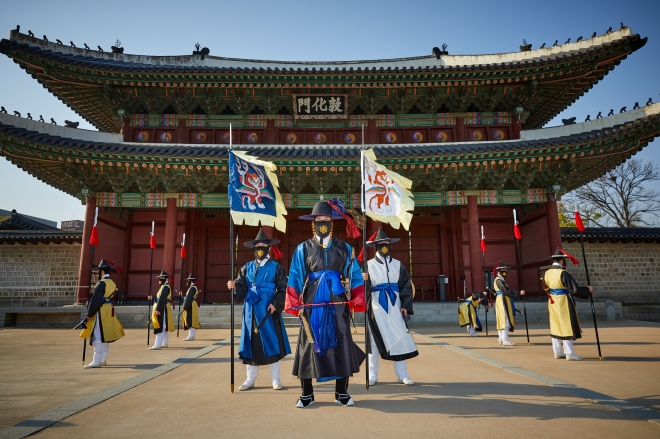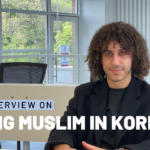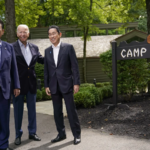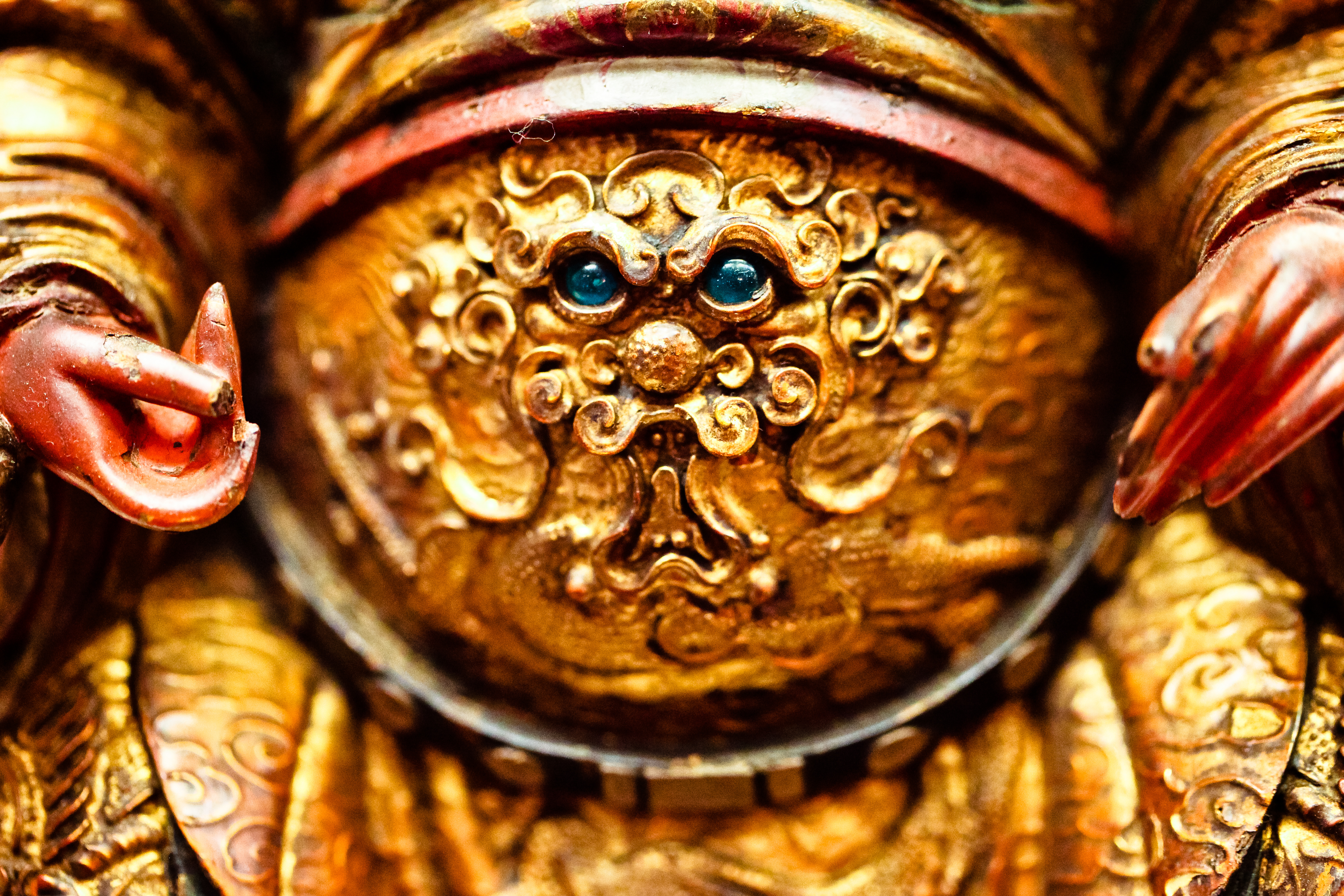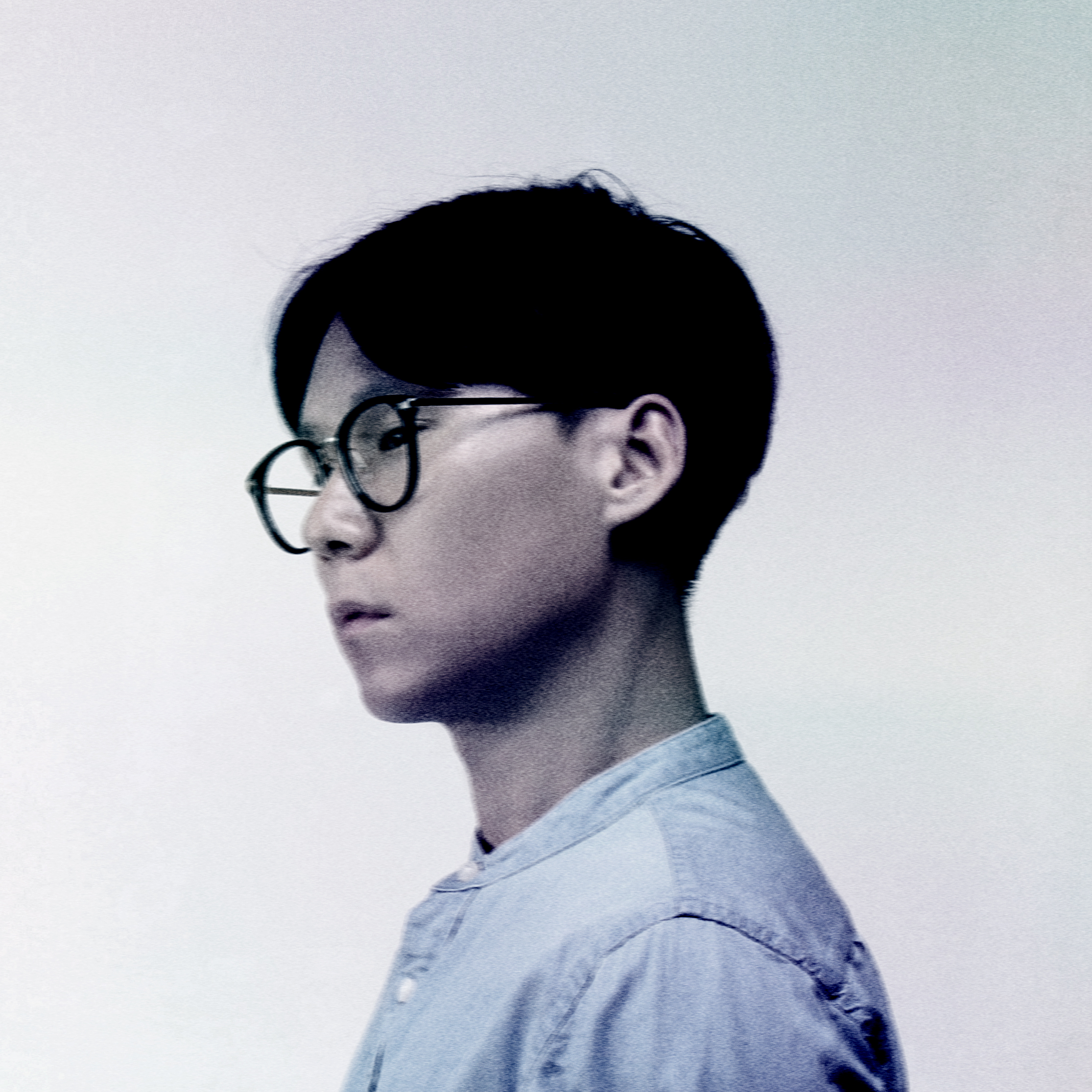When imagining Seoul, most would envision the skyline of skyscrapers and mountains with the traditional royal palace in the middle, a sea of scarce tranquillity in the bustling metropolis that has been the Korean capital for over 600 years. Portrayed often in tandem with tourists in Hanbok and the Gwanghwamun (광화문) guarded by the traditional Royal Guard, Gyeongbokgung (경복궁) has become one of Seoul’s most well-known landmarks; some might find it surprising to hear that most of this traditionality are faux modern reconstructions of what might have once stood there.
The rediscovery of the Royal geography in Seoul is not only the case for the Gyeongbok Palace, but also the Changdeokgung (창덕궁), Changgyeonggung (창경궁), Kyeongheegung (경희궁), and Deoksugung (덕수궁), as well as the Jongmyo (종묘) and Sajikdan (사직단). As early as 1984, reports were made to the president about the historic value of the palaces as symbols of Seoul and the national spirit and how these historic spaces could be preserved and improved. From the beginning, there has also been criticism about the accuracy, value, and contradictions in the policies regarding restorations. How has modern society reimagined the Royal Palaces, their spatial and temporal dimensions, their cultures and their meanings?
Korean Spirit
History and memory do not always go hand in hand. Full of possibilities for political purposes is the physical landscape: a tangible link to the past, full of the remains of both the subjugator and subjugated. Since nationalist rhetoric does not always have to correspond to reality, a narrative encompasses the political potential of replacing the authentic memory. Indeed, social order is preserved thanks to the deliberate distortion of collective memory. According to Hobsbawm, this memory manipulation is strongest in postcolonial societies where new forms of identity are dynamically reconstituted, leading to the so-called ‘invention of traditions’.
It is therefore not surprising that a distinct discourse about the past has been formulated in Korean society. With a short century of exploitation and oppression consisting of occupation, annexation, racial subjugation, followed by short-lived liberation, a disastrous war, and meteoric development at the expense of freedom of expression and democracy, the socio-cultural trauma runs deep. The democratisation of society in the early 90s led to the (re)emergence of the feeling that the “minjok jeonggi” (spirit of the nation, 민족정기) needs to be restored and rectified, and this discourse on “rectifying the past” therefore continues to influence public policy to this day.
The case of the Gyeonbokggung
In an ironic twist of fate, it is not the first time that the Gyeongbok Palace is part of a discourse of reconstruction. Constructed as the main palace during the early years of the Joseon dynasty, it was erected as the central hub of governance in accordance with the Confucian classics. War with the Japanese in the 16th century that led to the abandonment of the palace after angry peasants razed it to the ground. 275 years later, in 1885, it was reborn as the main palace again, with the largest area and number of rooms of all the palaces in Seoul and a grand ceremony with King Gojong returning to the palace. Yet by 1990, only 7.2% of the palace was still standing. Most of the palace was deliberately destroyed by the Japanese during their rule over the peninsula. Instead of a symbol of the might of the Korean Empire, it would become a park where the modernisation efforts of the colonisers would be displayed to keep the Koreans in contempt.

Source: KBS
Discussions about rebuilding the old palace in the 1990s were connected to the fate of the Joseon Chongdokbu (조선총독부), the former central government building of the Japanese that opened on the palace grounds in 1926. Plans to demolish the building had been in place as early as 1945, but cost and technical constraints made it impossible. Consequently, the building remained inextricably linked to the history of the first Korean republic: this is where the Korean state was proclaimed in 1948, and former President Park Chung-hee restored the building for government use.
A fierce debate raged between pro- and anti-demolition. The pro-demolition camp saw the demolition as the symbolic break with the colonial past and the rebuilding of the palace would be the moment when the national spirit could be restored. Anti-demolition saw the building as a piece of historic architecture that should be preserved, that had value as a symbol of reappropriation and a new Korea. A different perspective on the issue came from Japan, where various organisations asked the Korean government to preserve the building or even move the building if necessary, which only aroused more pro-demolition feelings among Koreans. With the final demolition of the building in 1995, reconstruction of the palace could begin.
Restoration Efforts
Currently, only three places are currently under active restoration work: Gyeongbok and Deoksu Palace and the restoration of the Sajikdan, though there have been projects at the other sites. Around the Deoksu Palace, work was started in 2018 and the plan is to have up to 41.5% restored by 2039. In the case of the Gyeongbokgung, the plan was to restore up to 75.8% of the palace by 2030. However, in 2015 these plans were drastically modified: the period was extended by 15 years to 2045 and only 41% would eventually be restored to original condition. The Changdeok and Changgyeong Palace have been restored to about 60% since 1991 and about 24% since 1983, respectively. But then there is the Kyeonghee Palace with only 1.17% of the original area of the palace designated as a cultural heritage zone; only three buildings have been restored on the complex out of around 100 original structures.
Only last month, April 25th, the Cultural Heritage Foundation revealed the excavation site in front of the Gwanghwamun gate, where archaeologists had been digging for the remains of the woldae (월대), a ceremonial stage in front of the palace, since September 2022 as part of the restoration project of the Gyeongbokgung. Since the beginning of the reconstruction efforts of the palace and its gate around the 1990s, the excavation and reconstruction of the woldae would symbolise the final step in the “reconstruction of the central spine of the Gyeongbok Palace.” Simultaneously, the first stages of “restoring” the woldae at the Daehanmun (대한문), the main gate of Deoksugung, were started this year; the gate itself stands 33 metres behind its original location and will not be restored. It was moved around the 70s because of the expansion of the traffic road. This makes the woldae of the Donhwamun (돈화문) of Changdeok Palace, the only one that has been properly restored after construction finished in 2020. Kyungheegung’s maingate, the Hunghwamun (흥화문) is the only original building of the palace that still stands but is about 230 metres out of place and has no woldae nor any plans for restoration of it.
Policies in Conflict
There has been considerable criticism of the constructions carried out: not enough use of available historical sources causing erroneous reconstructions of buildings that are based on estimates and assumptions, while still labelling them as “complete” reconstructions. For example, at the Changdeok Palace, an original standing building has been renovated into a café rather than restored to original status. In addition, there are private properties on the palace grounds which make restoration work legally impossible. Consequently, there are still calls for a new restoration project. This is also the case for the Changgyeong Palace, but lack of funding has led to nowhere. Reasons for the scaling down of the other restoration plans mostly had to do with reduction in budget, in tandem with issues surrounding disaster management for cultural heritage, the explosion of tourists, and questions about the zoning of the restored palace.
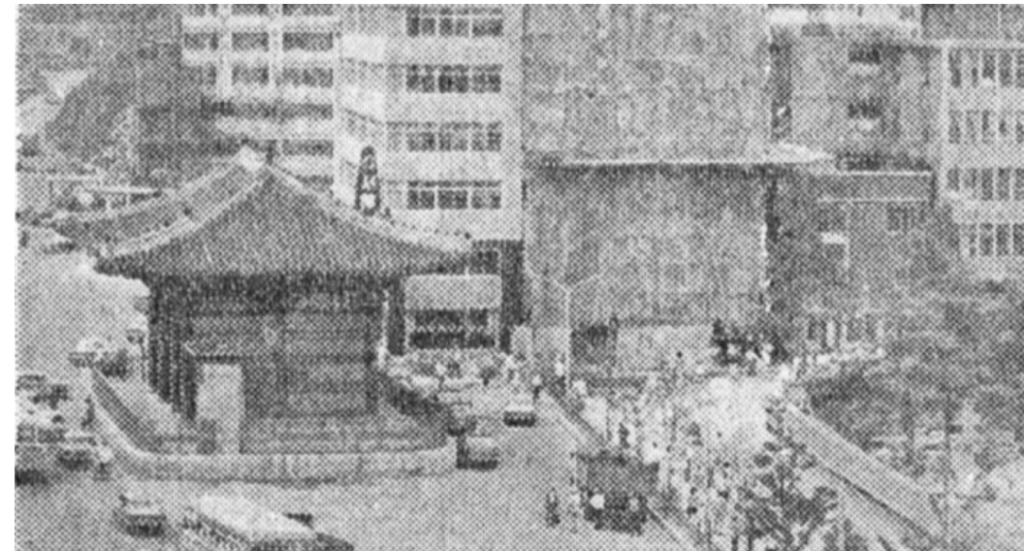
Source: Kyunghyang Shinmun
Different branches of the government are also not always agreeing on the way the restoration efforts should be directed. On the grounds of the Gyeongbokgung there still stands the National Folk Museum and the National Palace Museum, hindering restoration. There is also the case of the construction of the Seoul Museum of Art and the Seoul History Museum on the former palace grounds of the Kyeongheegung. The Korea Meteorological Administration and the Seoul Metropolitan Office of Education also had their office buildings on the site. Cooperation between the Seoul Metropolitan Government and the Cultural Heritage Administration ceased because of budget problems and the evasion of responsibilities between the two agencies.
Quintessential Koreanness
This then begs the question: what does Korea want? It is clear that, particularly in the 1980s and 1990s, there was a clear desire for the revival of the national spirit, materialised in the reconstruction of seemingly traditional Korean spaces, such as the palace grounds. This aspiration has significantly softened over the years. This search for cultural heritage as an anchor for identity has given way to more practical questions about the usage of the palace grounds: it is questionable, for example, whether the justification about reducing Gyeongbok Palace rebuilding was correct, since reducing the number of buildings only leads to a sense of emptiness; the palace is perceived as an open-air museum, rather than a functional space, exactly in line with the policy of the Japanese regime and a critique which has not improved over the past two decades.
Although these questions of experience and practicality were already raised at the time, it is now a clear pillar of policy regarding the management and future development of the palaces. Still, historical accuracy also remains an important issue, although the focus has shifted to how this accuracy contributes to the cultural and ultimately tourist experience of the palaces. Recently, reconstructed buildings in the palaces have become available for meetings. So one might now speak of a truly post-colonial era: the palaces as spaces are thus being revived, no longer as merely public parks with semi-historical heritage but as living spaces where new meaning can be given to history.
Postcolonial Memory
Thus Korea is trying to move forward, developing itself from an anti-colonial society to a post-colonial society in which “traditional” Korean culture has a chance to develop beyond 1910 as well. An example would be the changing-of-the-guard ceremonies in front of the palaces that were started in 2002 as part of an effort to improve tourism, benchmarking the British Royal Guard. The lack of historical records in regards to the ceremony has spurred the Cultural Heritage Foundation to conduct two studies on the topic, improving the accuracy of the ceremonies. However, the anachronism of a soldier in a re-imagined traditional attire from the late 1400s, guarding the front gate of a palace that was not re-constructed until the 1880s essentially remains, as the ceremony is based on the late 15th century while the reconstruction of the places can be placed around the late 19th and early 20th century.
There is a constant effort to formulate an essentialized Koreanness where the Palaces are a source of national symbols and architectural pride, a space full of material greatness of the past and therefore a true and pure Korea that is untainted by the modernity forced upon by the Japanese: the palaces as symbols of the Korean spirit, destroyed by the colonial regime and subsequently restored in all their glory. It is this paradoxical relation between the unattainable essentialized Koreanness of the past and the absolute necessity of the reconstruction to symbolise the final victory of the Korean spirit that births the manufacturing of temporally faux ceremonies and spatially misplaced reconstructions of grand palace entrances.

